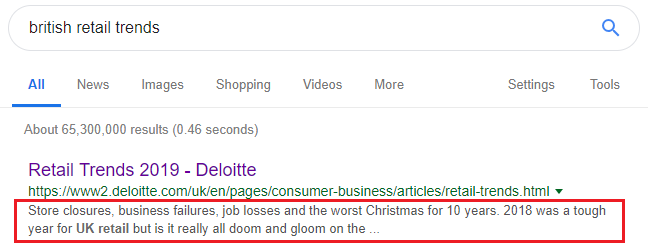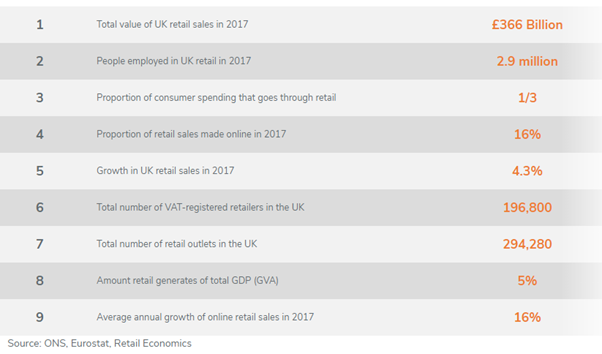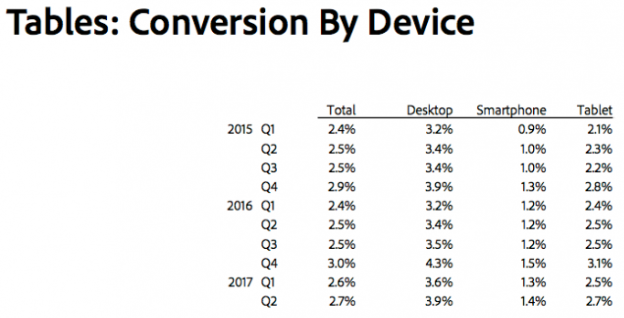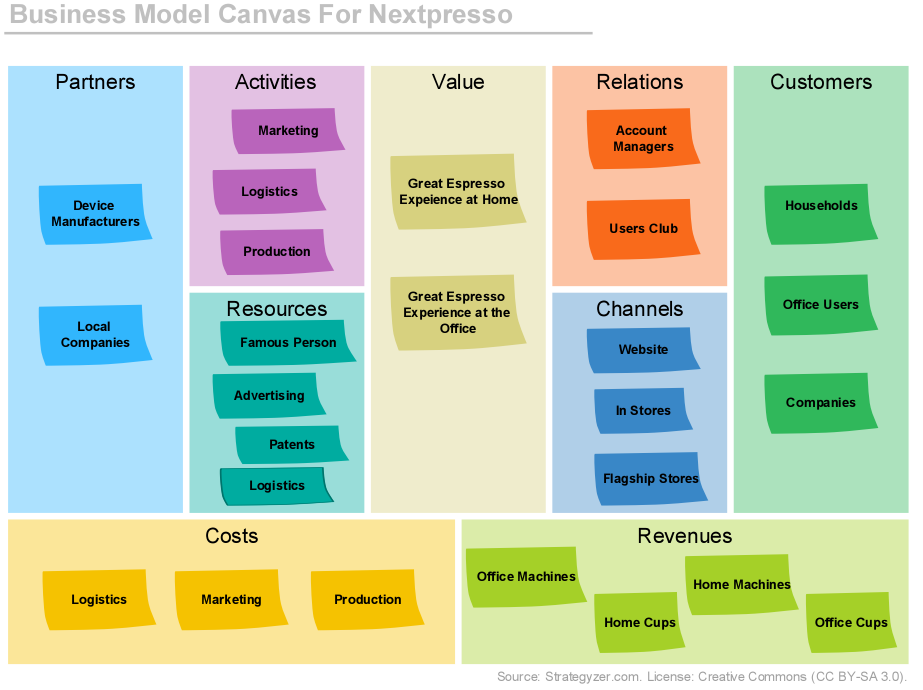All over the world, retailers seem to be having a hard time lately. In the UK, for instance, over the last several years, their woes have become part of the national narrative, alongside the lack of housing, or an underfunded NHS. Whether in the local paper, online or on television, one hears about retailers’ troubles regularly – at times it seems the only thing disappearing faster than retail stores in Britain are the polar ice caps.
Tellingly, as we speak at the time of this writing, the second and third largest retail chains in the country, Sainsbury’s and Asda, are undergoing an attempted merger in the hope that gained synergies will make the new organization more competitive. Meanwhile, in the Netherlands the largest toy shop chain just recently closed its doors as it officially filed for bankruptcy. This is an intriguing global phenomenon.
With 2018 having relatively recently ended, I was interested in what the new year might hold for this seemingly embattled industry on the home front. A quick search online for “british retail trends” yielded this as a first result:

In case you can’t read that highlighted bit, it says “Store closures, business failures, job losses and the worst Christmas for 10 years. 2018 was a tough year for UK retail…” and then the article goes on to give more nuance to the Business Model issue.
That’s just one example, but there are thousands of them out there. In the UK (and I expect elsewhere too), they make up a growing narrative of retail spiralling down into oblivion, which has intrigued me for quite some time now. Everywhere you look, you learn the high street is hurting, and the forecast always calls for further misery in the sector, with more bankruptcies and lay-offs ahead on the horizon. So, at this point you wouldn’t be amiss to ask, “Why is the sector dying, or at least shrinking?”.
And, by the same token, you wouldn’t be amiss for exclaiming out loud upon learning that… it isn’t. It’s not. In the UK, if we take it as an example, the retail sector is growing. It grew by 4.3% in 2017 compared to the previous year, and then again by 2.7% in 2018. The retail pie isn’t shrinking – quite the opposite. Sure, certain slices are getting thinner, but others are growing at a pace that caused the industry overall to expand in the past few years. So, the retailers whose plight is making the news aren’t victims, at least not of some unstoppable force that’s out to get them; it’s not cruel misfortune and, this is what I want to briefly address in this post.

Of course, the playing field has evolved. The last ten, twenty years have seen significant social and technological developments, no one can deny that. But can you point to any decade in recent memory that hasn’t? The marketplace is dynamic, and it’s becoming increasingly so, a trend which hasn’t started last year, it’s been a part of the fabric of business since before anyone can remember. Disruption and uncertainty are to be expected. They should be planned for and leveraged – not used as an excuse for failure. What we’re witnessing is simply the story of life, unfolding in front of our eyes in a Darwinian fashion.
Yes, brick-and-mortar retailers are scaling down operations, laying off employees, even going into administration but the fault lies with them. Specifically, with their leadership, who either resisted change or failed to capitalize on it – a strategic charge for which they are well remunerated. If you think about it, we didn’t see market conditions turn upside down overnight. Computers weren’t invented 3 years ago. Neither was the World Wide Web. Amazon was founded in 1994(!). Therefore, I think it’s safe to say the ‘extraordinary market conditions’ story doesn’t hold up.
The bottom line is that good business decisions have long-term implications and so do bad ones. Organizations that are in trouble today are feeling the brunt of poor strategic decisions and complacency across a long arc of time. We’re seeing the results of failing to adapt and adjust, i.e. late in adopting mobile/social elements to their sales and marketing mix, unwilling to modernize outdated store concepts etc. What undermines organizations – 10 years ago, today, and a year from now – is the lack of vision. The lack of desire or ability to change because of how challenging that might prove, or because it may force them to be confronted with the fact they’re not up for the task. If there’s a scapegoat in this story their name isn’t Mr. Market, it’s Mr. Manager; and the results of bad management are the same, be it boom or recession.
Now here are two ideas that organizations could use to course correct at this point. First of all, they should rethink and update their IT stack in order to support a strong omnichannel strategy, with an emphasis on great online user experience. Executed correctly, this would create another income stream and align their business model with present trends.
Again if we look at the United Kingdom, online sales currently account for 17% of all retail spend, but that number is growing at a very fast rate. In fact, it is expected to account for more than a third of all retail spend in 2030. So, investing intelligently in capabilities – IT or otherwise – that put them in a position to take advantage of social and tech developments would, to a certain degree, future-proof the organization. At least it would ensure the company had a business unit that could ride a rising wave and expand as the trend itself continues.
Naturally, this would be a significant undertaking. It would require significant restructuring, top-notch coordination across many different teams, and ultimately some very crucial strategic calls would have to be made keeping in mind the enterprise’s entire ecosystem. Even so, when the alternative is a slow, petering death the only question management should ask themselves is, “What are we waiting for?”.

Additionally, for anyone who might be thinking that it’s too late to get in the game and do great online retail, consider this. The total value of online retail transactions will more than double over the next decade. In itself that’s a great opportunity. What’s more, however, at the moment around 55% of that traffic comes from smartphones (as opposed to laptops, desktops, tablets), and the really interesting bit? Mobile retail conversion rates are the lowest amongst all devices. Here is a breakdown according to a report that studied a sample of the largest 250 US retailers. The key takeaway? There is plenty of room for any willing organization to carve out a niche for itself and be a leader in online retail customer experience. Why not be a premiere mobile experience provider?
Secondly, retailers should run an honest assessment of their mission, their business model, as well as their audience’s needs and desires in the present. They might find they are no longer on the same wavelength, which may be scary to learn at first, but it would present a genuine opportunity for realignment with their target market. Organizations that are still doing business the same way they did 20 years ago will undoubtedly find considerable ground for growth. It’s time to adopt customer-centric business model.
When is the last time some of the more afflicted brick-and-mortar retailers mapped out their customer’s journey, and tried to cater for their expectations? Customer journeys are a fantastic tool that are seeing increasing usage in companies seeking to re-focus their energy and attention on their audience. That’s because in a world where the barrier to entry has been lowered so much and flashy technology is becoming more accessible by the day, consumers are spoiled for choice. To keep them, organizations need to employ customer-centric design.

Example of an ArchiMate BMC view for a hypothetical retailer
By finding innovative ways to surprise high street shoppers with modern experiences, or better customer care, retailers could reinvent and actually carve a spot for themselves in the 21st century. It’s a matter of being willing to adapt, though. Amazon doesn’t by default reject the idea of doing business in the physical world. Their path was dictated by Jeff Bezos seeing the potential of the internet. But once they had something genuinely new to offer to real-life shoppers (i.e. cashierless stores), Amazon pounced on the opportunity. So, making intelligent investments in forward-facing capabilities that support growth, and offering buyers a reason to visit can turn around the trend of diminishing footfall.
It absolutely can be done, and Target has proven that. Their architectural efforts around enabling true omnichannel retail have underpinned one of the bigger success stories as far as turning around a large company goes. By articulating and executing on a clear architectural vision and Business Model, Target effectively integrated their stores into consumers’ buying behavior and found success in this new online-driven paradigm.
The last two decades have provided ample opportunity for growth but, ultimately, weak innovation drive and organizational rigidity meant many companies missed those strategic opportunities. The pains of footfall-dependent retail worldwide are directly attributable to the lack of action and creativity on the side of leaders. On the whole, the retail industry is growing, despite the disappearing ‘middle segment’ and worrying headlines.
The full story is that some players – the ones who adapted by aligning their business to growing social/tech currents – are reaping the rewards of their diligence, while those who maintained course are slowly being squeezed out of the market. To have a fighting chance, organizations should design a fully-integrated experience across all channels (omnichannel) and rethink how they do business face-to-face. Mobile retail, as mentioned previously, has yet a lot of room for improvement, with the ceiling far from having been reached, both in terms of volume as well as user experience. And lastly, adopt a customer-centric business model, make the physical store a place where people come to enjoy new and exciting experiences as they browse products.
Thank you for reading about Changing Your Business Model and see you again next week!